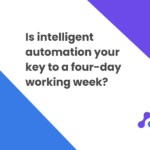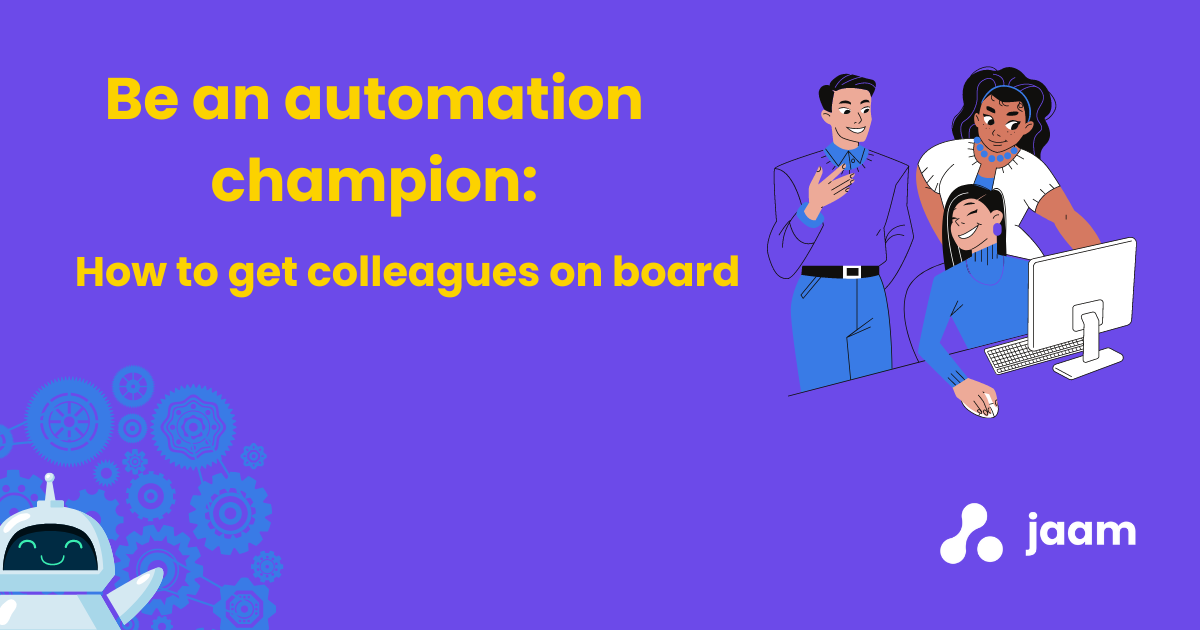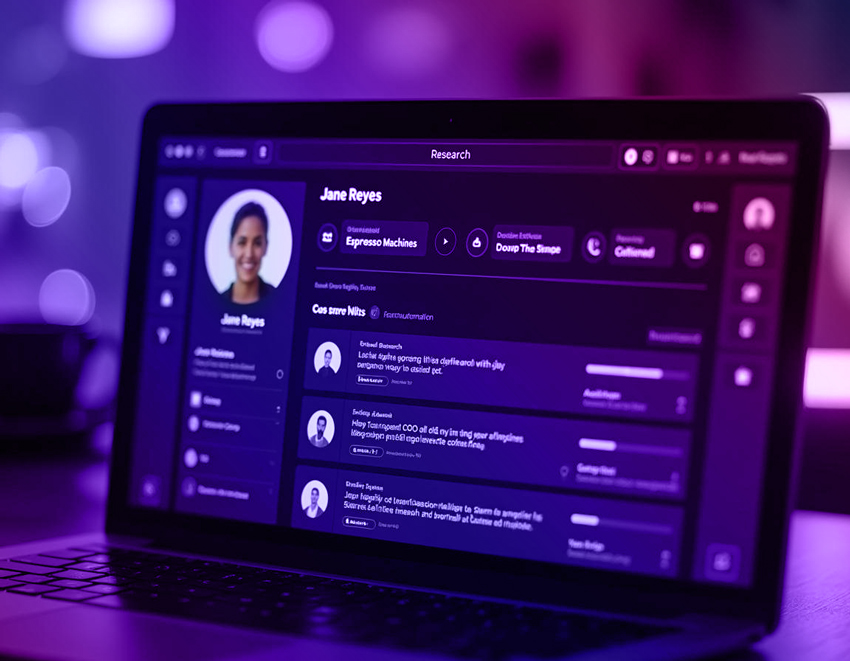
For businesses and customers, the benefits of automation are clear: improved efficiency, cost savings, scalability, faster service, 24/7 availability… and the list goes on. But where does that leave the workforce?
As someone leading the charge for automation in your organisation, it’s essential to recognise that your colleagues are not only being asked to navigate new tools and technologies. They might also be grappling with evolving job roles and potential worries about their future.
How can you make sure that everyone understands, embraces and gains from the transformation? To support your strategy, let’s explore some of the concerns your colleagues may have, and how you can make the transition less daunting and more beneficial for everyone.
Common concerns about automation and AI in the workplace
“Machines take me by surprise with great frequency.” – Alan Turing
Just as the father of modern computing was often astonished by machines, the rapid strides in technology might feel overwhelming to many. When people think about sharing a workplace with robots and AI, it can bring up a mixed bag of emotions. There’s excitement, curiosity and, inevitably, a healthy dose of apprehension.
Here are some questions your colleagues might ask:
- Will my skills soon be redundant? Will I lose my job?
As processes increasingly shift to automation, some team members may be wondering whether their current skills could become outdated. - Won’t new tech create extra stress? Isn’t setting it all up a huge task?
Shifting to automated systems might mean investing in new software or rethinking current processes. Plus, there’s the need to train teams to work with these new tools. A bumpy transition could lead to temporary disruptions. - Can machines really handle the job?
Some of your co-workers might feel that machines lack the human touch, especially in tasks that demand judgment or interpretation. They might question whether machines can truly manage certain processes in the same way people do. - What if things spiral out of control or AI turns against humanity?
A little extreme, perhaps, but this is the classic sci-fi concern where AI becomes so advanced that it acts against human interests. But let’s not get ahead of ourselves: the most rebellion we might see from workplace automation is an invite for a non-existent meeting.
Communicating the upside of automation
To address these concerns, it is useful to highlight how automation stands to benefit your colleagues. Here are a few of many examples:
- Increased job satisfaction:
By taking on repetitive tasks, automation gives people an opportunity to engage in work that they find more meaningful. Mentoring a new colleague, building client relationships, or taking time out for planning and analysis are all likely to be more fulfilling than completing paperwork or punching numbers into a spreadsheet, for instance. These are also opportunities to build professional relevance and add more value, which help guard against redundancy.
- Skill enhancement:
Automation introduces people to new technology, offering a chance for upskilling. By mastering new tools, individuals can work more efficiently, solve problems more innovatively and offer fresh solutions to age-old challenges. It’s also a way to stay relevant in an increasingly digital world.
- Improved work-Life balance:
With efficient automated processes, it’s feasible to achieve more in less time. This helps to make workloads more manageable, working hours more family-friendly, and even paves the way for initiatives like the four-day work week.
The reality is: automation and AI are here to stay
These technologies are already deeply embedded in the fabric of our society and working world. Those who don’t adapt risk being left behind.
The World Economic Forum recently published a new Future of Jobs Report.[1] A key takeaway (no shocker here) is that technology adoption will remain a key driver of business transformation over the next five years. Over 85% of organisations surveyed plan to adopt new and frontier technologies, and give more people access to digital tools.
But where do employees stand on this? A survey of 6,400 global workers, commissioned by UiPath[2], found that more than half of all Generation Z (69%), Millennial (63%), and Generation X (51%) respondents think that automation would help them do their jobs better. However, the seasoned Baby Boomers are slightly more circumspect, with only 44% seeing automation in the same favourable light.
These respondents foresee automation reshaping their work lives by offering more flexibility (34%), carving out time for upskilling (32%), and freeing up more time during the workday for important tasks (27%).
However, joining the automation wave should be a well-planned process. Rather than diving in headfirst without a strategy, aim to strike the right balance between innovation and inclusion – making sure everyone is on board.
Stop, Collaborate, and Listen: Steps to success
When introducing transformative technologies like automation and AI, the approach is as crucial as the intent. Taking a cue from Vanilla Ice’s memorable lyrics, it’s wise to first ‘stop’ and understand the current landscape, ‘listen’ to the concerns and insights of your colleagues, and ‘collaborate’ on integrating these new tools. By involving everyone in the discussion, you nurture a sense of ownership and enhance buy-in.
Here are some steps you could take:
- Showcase tangible benefits:
Share real-life examples of how automation has enhanced productivity, reduced repetitive tasks and paved the way for skill enhancement in other teams. Concrete benefits often speak louder than abstract promises.
- Offer engaging training and upskilling:
Reassure your team that they’ll receive the necessary training and resources to adapt to the new tools. Highlight the opportunity as a growth trajectory rather than a replacement threat.
- Keep communicating:
Regularly update the team about progress, setbacks or changes in the automation strategy. When people are informed, they’re more likely to trust the process.
By approaching automation as a shared adventure and not just a top-down decision, you can integrate new technologies in a way that positively impacts everyone, while keeping the team morale high. To paraphrase another 90s musical phenomenon, smells like team spirit 😊.
[1] https://www.weforum.org/reports/the-future-of-jobs-report-2023/
[2] https://www.uipath.com/newsroom/uipath-unveils-automation-generation-report






